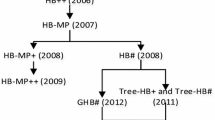Abstract
With the wider application of radio frequency identification (RFID) technology in various vital systems, more and more privacy threats and security flaws have been emerging. Traditional RFID systems only focus attention on foundational implementation, which lacks privacy protection and effective identity authentication. To solve the privacy protection problem of RFID systems,this paper proposes PEM4RFID privacy enhancement model FOR RFID: a “2 + 2” identity authentication mechanism, which includes a two-factor authentication protocol (TFAP) based on “two-way authentication”. Our TFAP adopts “hardware information + AES-ECC encryption” method, and while the “two-way authentication” is based on improved combined public key (CPK). Case study shows that our proposed PEM4RFID has characteristics of untraceability and nonrepeatability of instructions, which realizes a good trade-off between privacy and security in RFID systems.
Access this chapter
Tax calculation will be finalised at checkout
Purchases are for personal use only
Similar content being viewed by others
References
Roberts, C.M.: Radio frequency identification (RFID). Comput. Secur. 26, 18–26 (2006)
Want, R.: An introduction to RFID technology. IEEE Pervasive Comput. 5, 25–33 (2006)
Miri, A.: Information science reference-imprint: advanced security and privacy for RFID technologies. In: America, p. 342. IGI Global, Hershey (2013)
Wang, J.S.: Provable security lightweight service—less RFID security search protocol. J. Hunan Univ. 41, 117–124 (2013)
Diffie, W., Hellman, M.E.: New directions in cryptography. IEEE Trans. Inf. Theory 22, 644–654 (1976)
Rivest, R., Shamir, A., Adleman, M.: A method for obtaining digital signatures and public-key cryptosystems. Commun. ACM 21, 120–126 (1978)
Miller, V.S.: Use of elliptic curves in cryptography. In: Williams, H.C. (ed.) CRYPTO 1985. LNCS, vol. 218, pp. 417–426. Springer, Heidelberg (1986)
Koblitz, N.: Elliptic curve cryptosystems. Math. Comput. 48, 203–209 (1987)
Zhang, X.A.: Research of elliptic curve cryptosystems. Commun. Technol. 5, 208–209, 212 (2009)
Peng, D.L., Li, C., Huo, H.: Computer science and information technology: an extended username token-based approach for REST-style web service security authentication. In: Proceedings of IEEE Computer Science and Information Technology Conference, America, pp. 582–586. IEEE (2009)
Boneh, D., Franklin, M.: Identity based encryption from weil pairing. In: Kilian, J. (ed.) CRYPTO 2001. LNCS, vol. 2139, pp. 213–229. Springer, Heidelberg (2001)
Nan, X.H.: CPK algorithm and identity authentication. China Inf. Secur. 28, 12–16 (2006)
Nan, X.H.: Identity authentication based on CPK, pp. 57–58. National Defense Industry Press, Beijing (2006)
Chen, H.P.: Description of CPK several issues. China Inf. Secur. 29, 47–49 (2007)
Jurisic, A., Menezes, A.: Elliptic curves and cryptography. Dr. Dobb’s J. 26–36 (1997)
Nan, X.H.: CPK combined public key cryptosystem v6.0. Netw. Comput. Secur. 97(7), 2–4 (2011)
Nan, X.H.: CPK combined public key cryptosystem v7.0. Netw. Comput. Secur. 113, 4–6 (2012)
Nan, X.H.: CPK combined public key cryptosystem v8.0. China Inf. Secur. 206, 12–16 (2012)
Nan, X.H., Chen, H.P.: Combined public key system standard. China Inf. Secur. 30, 21–22 (2008)
Johnson, D., Menezes, A.: The elliptic curve digital signature algorithm (ECDSA). Technical report CORR, pp. 99–34, (1999). http://cs.ucsb.edu/~koc/ccs130h/notes/ecdsa-cert.pdf
Acknowledgments
This work is supported by the National Natural Science Foundation of China (No. 61340039, 61572355, 61572349) and 985 funds of Tianjin University, Tianjin Research Program of Application Foundation and Advanced Technology under grant No. 15JCYBJC15700 and No. 14JCTPJC00517.
Author information
Authors and Affiliations
Corresponding author
Editor information
Editors and Affiliations
Rights and permissions
Copyright information
© 2015 Springer International Publishing Switzerland
About this paper
Cite this paper
Xu, G., Ren, Y., Liu, B., Zhang, G., Li, X., Feng, Z. (2015). PEM4RFID: Privacy Enhancement Model for RFID Systems. In: Wang, G., Zomaya, A., Martinez, G., Li, K. (eds) Algorithms and Architectures for Parallel Processing. ICA3PP 2015. Lecture Notes in Computer Science(), vol 9530. Springer, Cham. https://doi.org/10.1007/978-3-319-27137-8_49
Download citation
DOI: https://doi.org/10.1007/978-3-319-27137-8_49
Published:
Publisher Name: Springer, Cham
Print ISBN: 978-3-319-27136-1
Online ISBN: 978-3-319-27137-8
eBook Packages: Computer ScienceComputer Science (R0)




